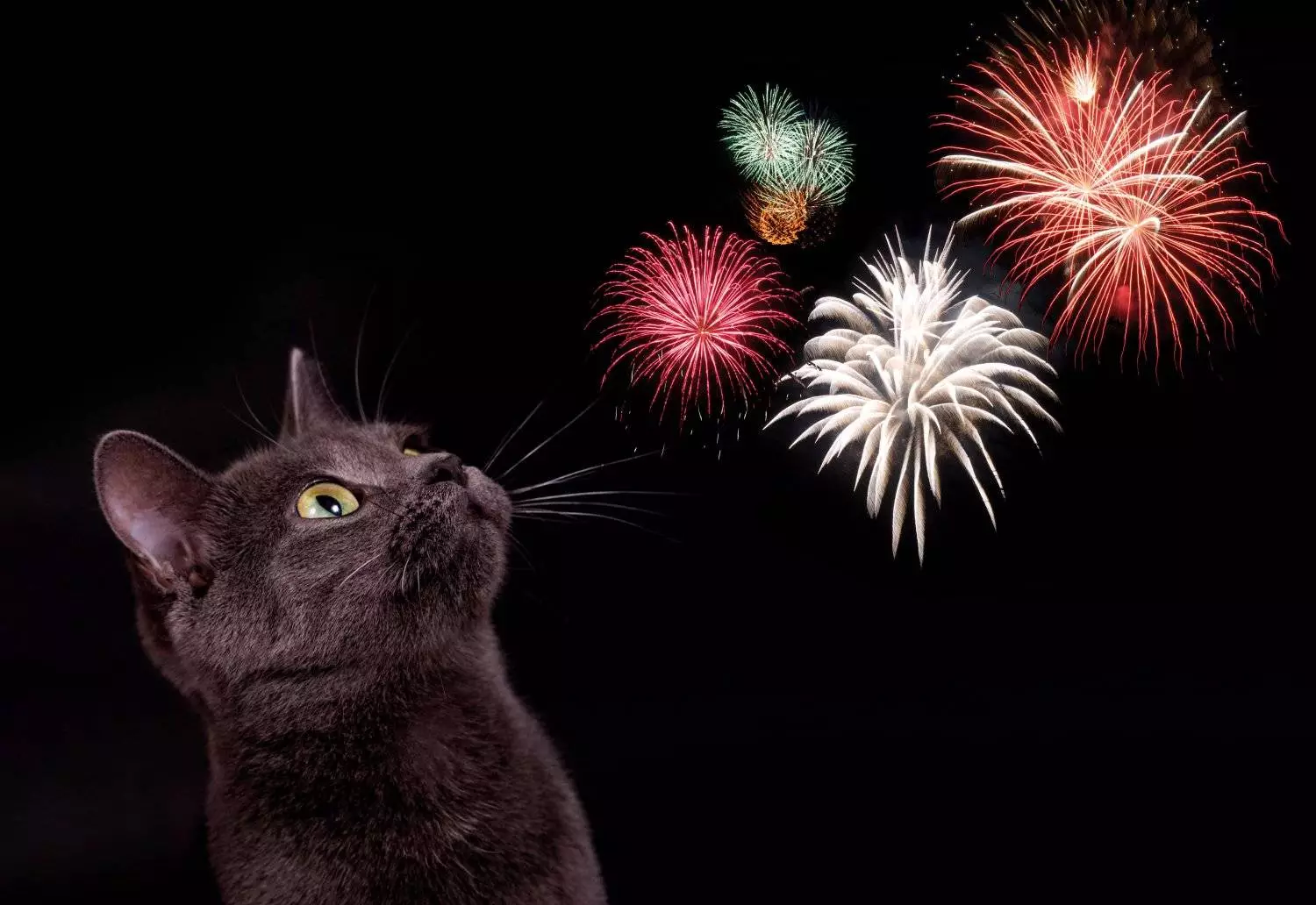Fireworks are synonymous with celebration for many, yet for our beloved pets, these dazzling displays often bring nothing but fear and panic. The 2022 PDSA Animal Wellbeing (PAW) Report reveals a staggering statistic: 41% of dogs and 30% of cats—translating to approximately 4.1 million dogs and 3.3 million cats across the UK—are terrified of fireworks. This alarming reality is not merely a trivial concern; it’s an urgent call to action for pet owners, urging us to understand our pets’ emotional needs and establish strategies to ease their distress.
The harsh truth is that while humans enjoy the beauty of a firework display, our pets experience an entirely different reality. PDSA Vet Nurse Nina Downing aptly points out that a dog’s or cat’s senses are far more acute than ours, amplifying their experience of loud noises and bright lights. This discrepancy can lead to immense stress and anxiety during firework season. With a little foresight and preparation, however, owners can significantly mitigate this fear and create a supportive environment.
Preparation: The Key to Calming Firework Fears
Preparation is not just advisable; it’s essential. Knowing when firework displays are scheduled gives pet owners the ability to mentally and physically ready their furry companions. Start by marking these dates on the calendar and plan accordingly. It’s important to create a comforting environment. Ensure all curtains or blinds are drawn and windows are securely closed. Blocking out both noise and visual stimuli can greatly reduce the distress your pets experience.
Equipping your home with distractions also helps. Loud music or a television playing softly can drown out some of the cacophony outside, making it less jarring for your pets. Another crucial step is to create a sanctuary—a safe haven where they feel secure when the sounds of fireworks erupt. This could be a cozy den crafted from blankets and cushions, tucked away in a quiet corner or even a high-up shelf where cats may feel safer.
Creating a Sanctuary: The Ideal Den for Pets
The concept of a “safe space” for pets during fireworks is not just a nice idea; it’s a psychological necessity for many. As Nina highlights, achieving this requires constructing a den that caters to your pet’s specific habits and instincts. Dogs may flourish in spaces like a crate or beneath a table, where they can feel encased and hidden. Cats, on the other hand, gravitate towards elevated areas—think atop cupboards or in enclosed beds that provide a sense of security.
Early implementation of such a space is vital. Prepare this den weeks in advance of firework season, allowing your pet to acclimate to it and view it as a refuge. Basic comforts—like their favorite toys, blankets, or even some treats placed within—can encourage them to explore and grow fond of their new hideaway. Remember, though, that the den should remain an optional refuge; never trap them inside, as this could exacerbate their anxiety.
Utilizing Pheromones: Nature’s Calming Mechanism
Harnessing the power of pheromones can significantly impact your pet’s emotional state during stressful periods. These chemical signals, often used by animals to communicate with each other, can be replicated in products designed for calming effects. According to Nina, investing in a pheromone diffuser or spray could be a game-changer for your pet’s experience during fireworks. To achieve maximal efficacy, introduce the diffuser a few weeks before the onslaught of fireworks, allowing time for it to permeate their environment.
When using pheromone sprays for instant calming, ensure the area is well-ventilated, permitting the alcohol component to evaporate before letting your pet into the space. If your efforts yield little success, don’t hesitate to consult your veterinarian for potential short-term medication that could help alleviate your pet’s anxiety.
Desensitization and Counterconditioning: The Long Game
For those committed to longer-term solutions, a strategy exists: desensitization and counterconditioning. While this is not a quick fix, it can fundamentally alter your pet’s relationship with firework noises. Start this journey by exposing your pet to recorded firework sounds at a low volume, gradually increasing intensity as they become accustomed. It’s a delicate process that requires patience and attentiveness.
Once your pet demonstrates comfort with the noise levels, introduce a reward system. Pair treats with the sound of fireworks to reshape their perception—transforming frightening noises into a trigger for pleasant associations. Although time-consuming, this method can yield remarkable results, helping your pet develop resilience towards previously traumatic experiences.
To sum up, the overwhelming anxiety that fireworks induce in pets is both preventable and manageable. With a proactive approach involving preparation, environmental adjustments, pheromone usage, and consistent training, pet owners can successfully transform this challenging situation into a more manageable one, allowing our furry friends to enjoy peace even during the most jubilant of human celebrations.
